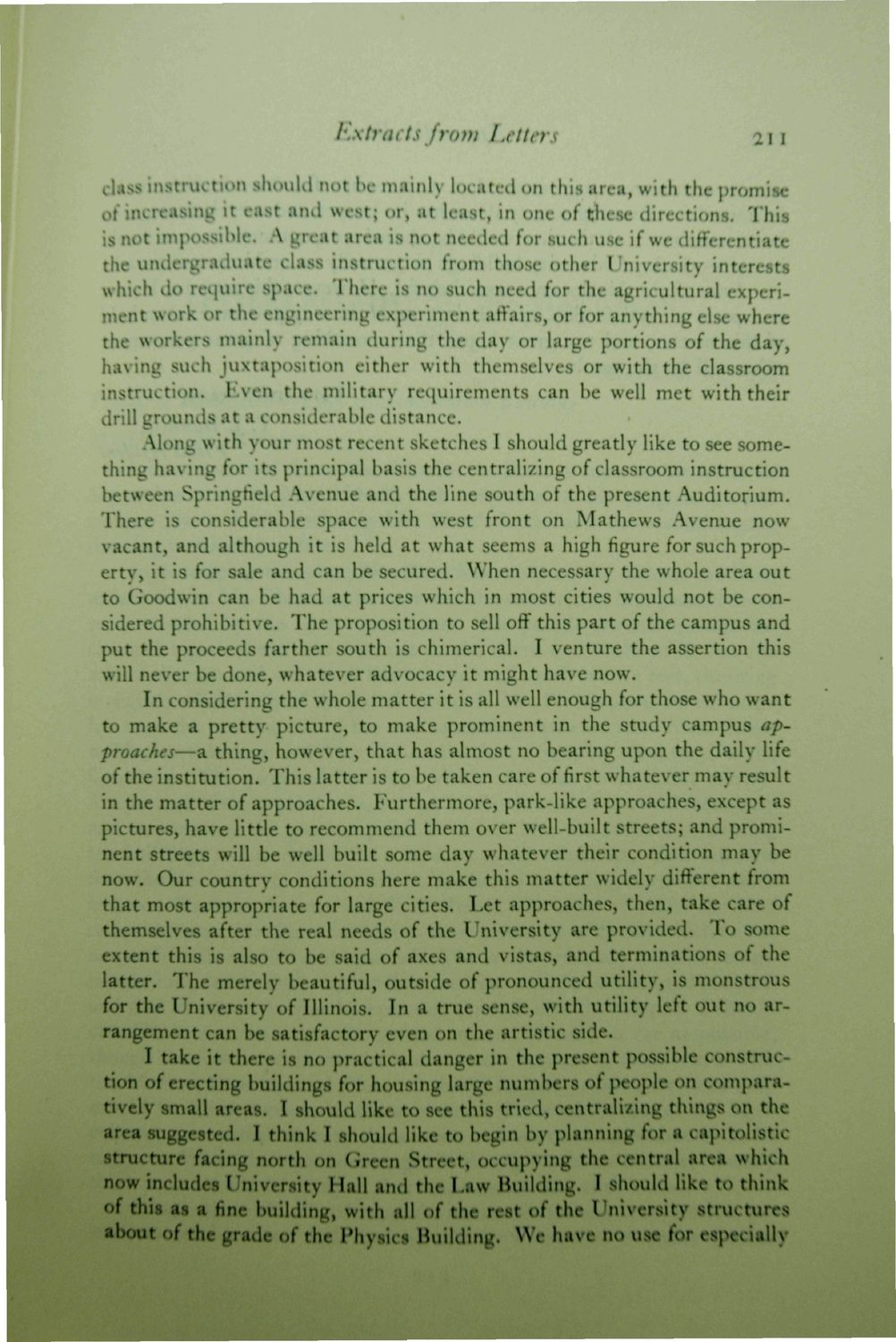| |
| |
Caption: Book - 30 Year Master Plan (Tilton & O'Donnell)
This is a reduced-resolution page image for fast online browsing.

EXTRACTED TEXT FROM PAGE:
Extracts from Letters 211 class instruction should not be mainly located on this area, with the promise of increasing it east and west; or, at least, in one of these directions. This is not impossible; A great area is not needed for such use if we differentiate the undergraduate class instruction from those other University interests which do require space. There is no such need for the agricultural experiment work or the engineering experiment affairs, or for anything else where the workers mainly remain during the day or large portions of the day, having such juxtaposition either with themselves or with the classroom instruction. Even the military requirements can be well met with their drill grounds at a considerable distance. Along with your most recent sketches I should greatly like to see something having for its principal basis the centralizing of classroom instruction between Springfield Avenue and the line south of the present Auditorium. There is considerable space with west front on Mathews Avenue now vacant, and although it is held at what seems a high figure for such property, it is for sale and can be secured. When necessary the whole area out to Goodwin can be had at prices which in most cities would not be considered prohibitive. The proposition to sell off this part of the campus and put the proceeds farther south is chimerical. I venture the assertion this will never be done, whatever advocacy it might have now. In considering the whole matter it is all well enough for those who want to make a pretty- picture, to make prominent in the study campus approaches—a thing, however, that has almost no bearing upon the daily life of the institution. This latter is to be taken care of first whatever may result in the matter of approaches. Furthermore, park-like approaches, except as pictures, have little to recommend them over well-built streets; and prominent streets will be well built some day whatever their condition may be now. Our country conditions here make this matter widely different from that most appropriate for large cities. Let approaches, then, take care of themselves after the real needs of the University are provided. To some extent this is also to be said of axes and vistas, and terminations of the latter. The merely beautiful, outside of pronounced utility, is monstrous for the University of Illinois. In a true sense, with utility left out no arrangement can be satisfactory even on the artistic side. I take it there is no practical danger in the present possible construction of erecting buildings for housing large numbers of people on comparatively small areas. I should like to see this tried, centralizing things on the area suggested. I think I should like to begin by planning for a capitolistie structure facing north on Green Street, occupying the central area which now includes University Hall and the Law Building. I should like to think of this as a fine building, with all of the rest of the University structures about of the grade of the Physics Building. We have no use for especially
| |